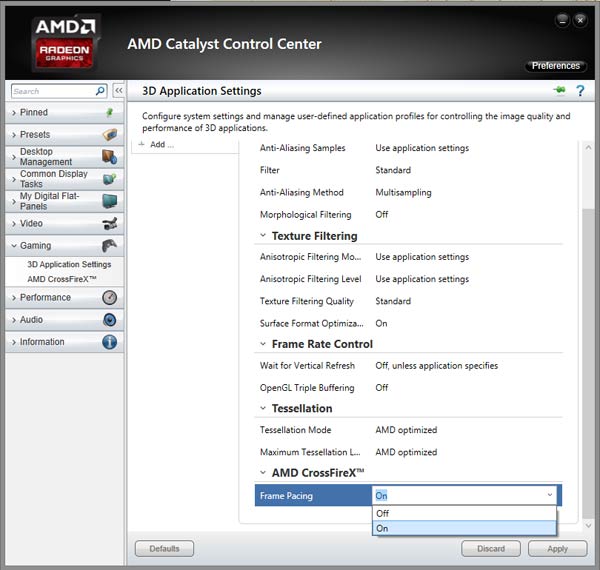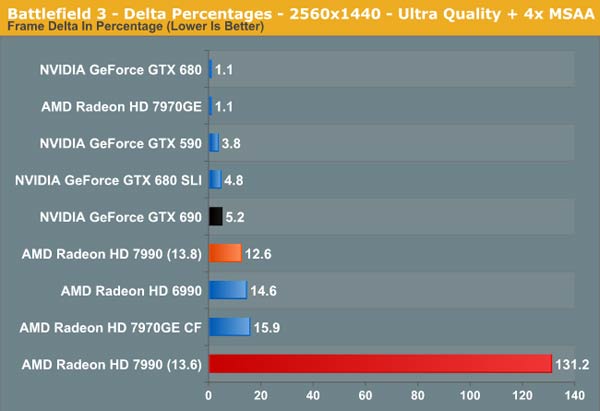Just over a month ago we heard from AMD's Radeon Twitter account that the graphics driver wizards at the firm were working hard on fixing the irksome micro-stutter issues users were experiencing, especially with CrossFireX setups. The fix didn't come out at the end of July as scheduled but was a day late and became available at 7pm BST yesterday.
The AMD Catalyst 13.8 Beta driver is now available to download. This release specifically addresses users' micro-stutter headaches by providing a frame pacing, or timing, setting for the AMD GPUs. Previously AMD cards wasted their time rendering frames that were not required (runt frames) only to find themselves lacking some time later in the real-time 3D game rendering. The problem manifested itself as less-smooth gameplay compared to Nvidia setups, even though the AMD cards might seem to perform at higher average frame rates.
The newly updated Catalyst Control Centre Beta includes the option for 'Frame Pacing' under the gaming tab, under the AMD CrossFireX setting (see below). From now this setting will be 'On' by default. AMD says the setting is supported by "DirectX 10 and DirectX 11 applications, and resolutions up to and including 2560x1600 (single display)". The new feature, when turned on, "ensures that frames rendered across multiple GPUs in a CrossFire configuration will be displayed at an even and regular pace" according to the driver's release notes.

The games you play won't need to have a specific or modified Catalyst profile to work with the frame pacing settings and you can set the option on a per-app basis. AMD says that future drivers will also support the frame pacing settings in DX9 games and apps, 4K monitors and Eyefinity setups.
MaximumPC has undergone some testing with the new Catalyst Beta and found it to make frame rates a lot less erratic/spiky than the previous driver. The site has graphs comparing the FPS variation over time for the Heaven benchmark, Tomb Raider and Metro last Light. The before and after graph for Tomb Raider is particularly smoothed and improved.

BF3 delta framerate percentage chart from Anandtech
Anadtech did framerate comparison analysis comparing the new 13.8 Catalysts smoothness on a Radeon with earlier drivers and the Nvidia competition. This tech site checked out games such as Total War: Shogun 2, BioShock Infinite and Crysis 3 but found the most impressive smoothness gains in Battlefield 3. Anandtech concluded that "With just one driver revision we have seen the Radeon HD 7990’s frame pacing go from laughable to acceptable; delta percentages of over 100% have been reduced to 20% or lower in 5 of the 6 games we’ve tested." However there is still room for improvement following this worthy first step.













